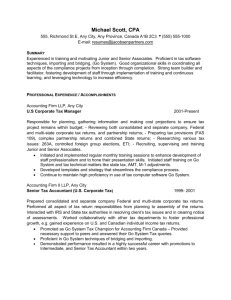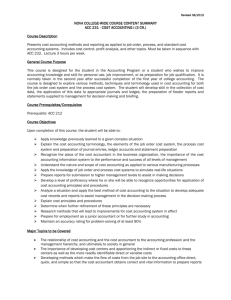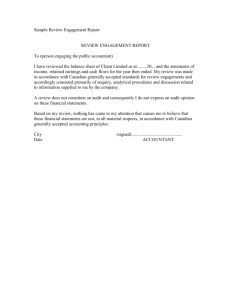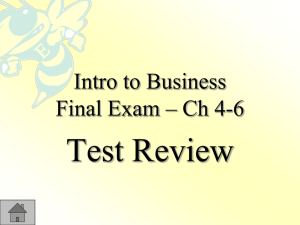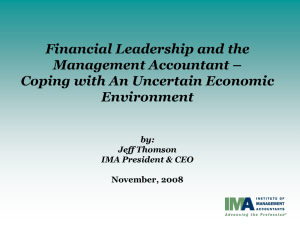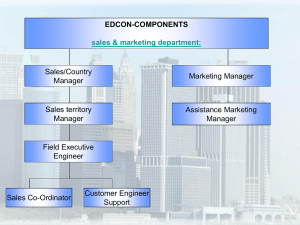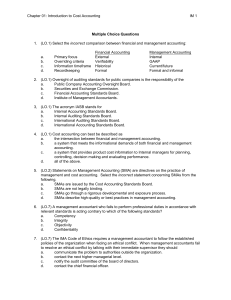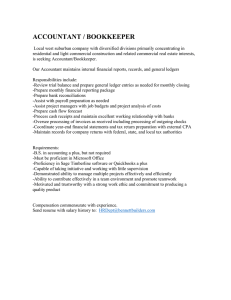BAF3M Accounting
advertisement
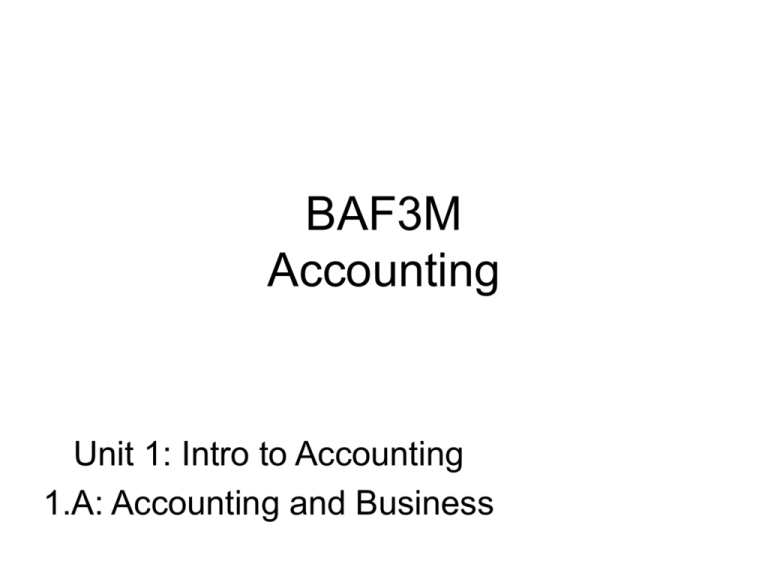
BAF3M Accounting Unit 1: Intro to Accounting 1.A: Accounting and Business First • Some Common Abbreviations used throughout this course ….. • • • • • • • • B/S – Balance Sheet A – Assets L – Liabilities OE – Owner’s Equity A/R – Accounts Receivable A/P – Accounts Payable TB – Trial Balance I/S – Income Statement • • • • • • Biz/Bus – Business Org’n – Organization Rec’d – Received Eq’n – Equation Stmt – Statement Mgmt - Management 1.1 What is Accounting • “Accounting” – is a system of dealing with financial information that provides information for decision making • Accounting has 5 main activities 1.1 What is Accounting • They are: (p. 1) – 1. gathering financial information – 2. preparing and collecting permanent records – 3. rearranging, summarizing and classifying financial information – 4. preparing information reports and summaries – 5. establishing controls to promote accuracy 1.2 Why Study Accounting? • Accounting can be useful to you: – On the job – In daily life (budgeting, taxes) – Owning your own business (entrepreneurship) – As a profession (CA, CGA, CMA) – Complexity of business 1.3 Characteristics of Business • A business involves the manufacture and/or sale of goods or services in order to earn a profit. • They generally fit into one of four categories: • Service Business • Merchandising Business • Manufacturing or Producing Business • Non-Profit Organization Use p.4-5 to help you describe each 1.3 Characteristics of Business Type of Business SERVICE MERCHANDISING MANUFACTURING NON-PROFIT Definition Example 1.3 Characteristics of Business • Forms of Business Ownership – 3 basic types – Sole Proprietorship – Partnership – Corporation (or “Limited” company) We will be working mostly with sole proprietorships, until about Chapter 13. 1.3 Characteristics of Business Form of Business Ownership Sole Proprietorship Partnership Corporation Definition Example 1.4 The Nature of Accounting • Categories of Accounting Work – 3 Main Categories • Routine Daily Activities • Periodic Accounting Activities • Miscellaneous Activities 1.4 The Nature of Accounting 1.5 Becoming a Professional • 3 National Accounting Organizations – CGA (Certified General Accountant) – CMA (Certified Management Accountant) – CA (Chartered Accountant) 1.6 Roles of Accounting • The Accounting Clerk (aka “Bookkeeper”) – Work is clerical in nature, deals mostly with routine matters • The Accountant – Broader scope of duties, requires more education and experience, usually responsible for an entire accounting system See p.8 for more job details for each End of Chapter Section NOTE: Each chapter section has two sets of activities at its conclusion: “questions” and “exercises” – also there is a section at the chapter’s end with “chapter review” questions and exercises Chapter 1 is so short that it only has the “chapter review” questions… So to review Ch 1’s content, we’ll try Ch1 Review Q’s: #2, 3, 4, 17 Ch1 Review Ex’s: #1, 3
